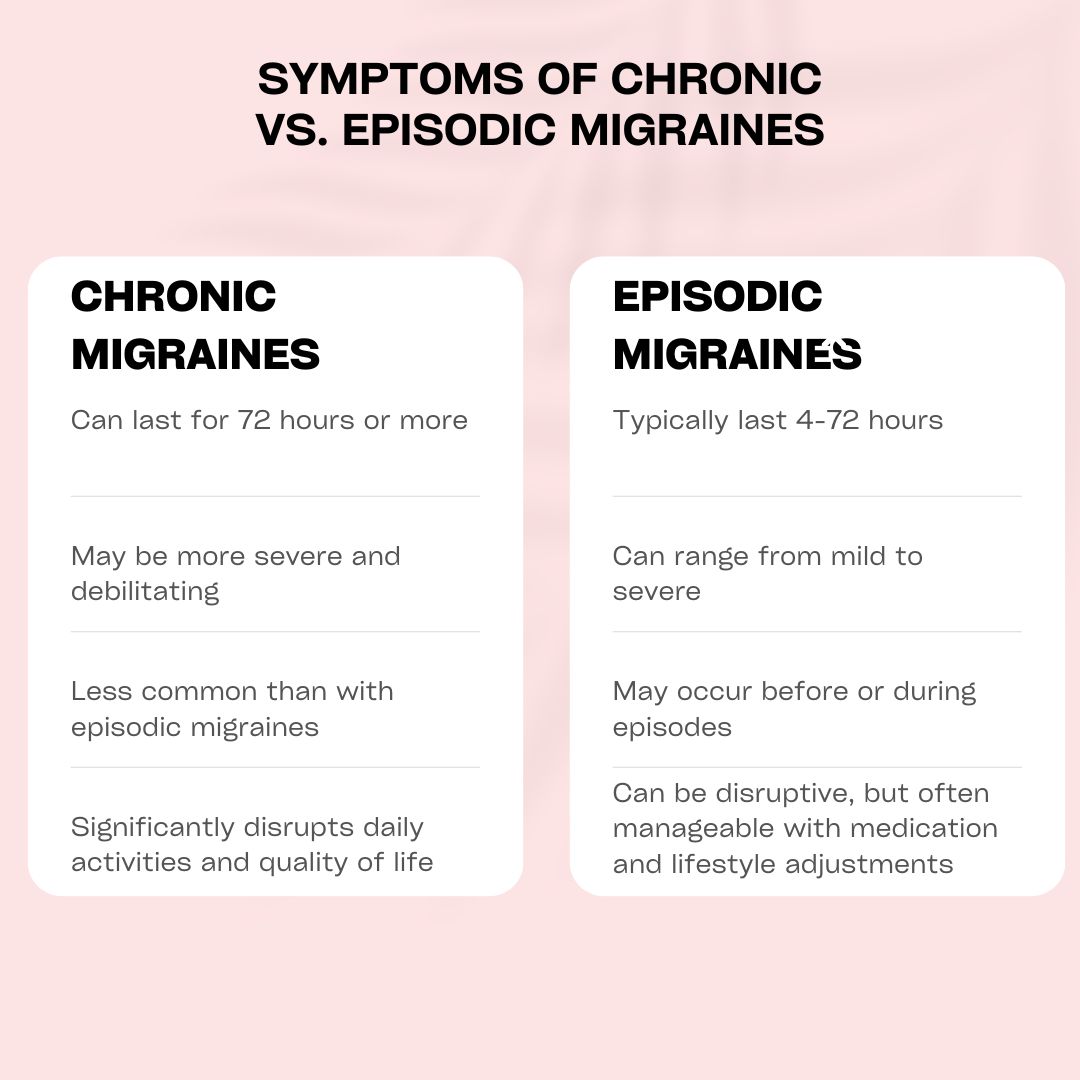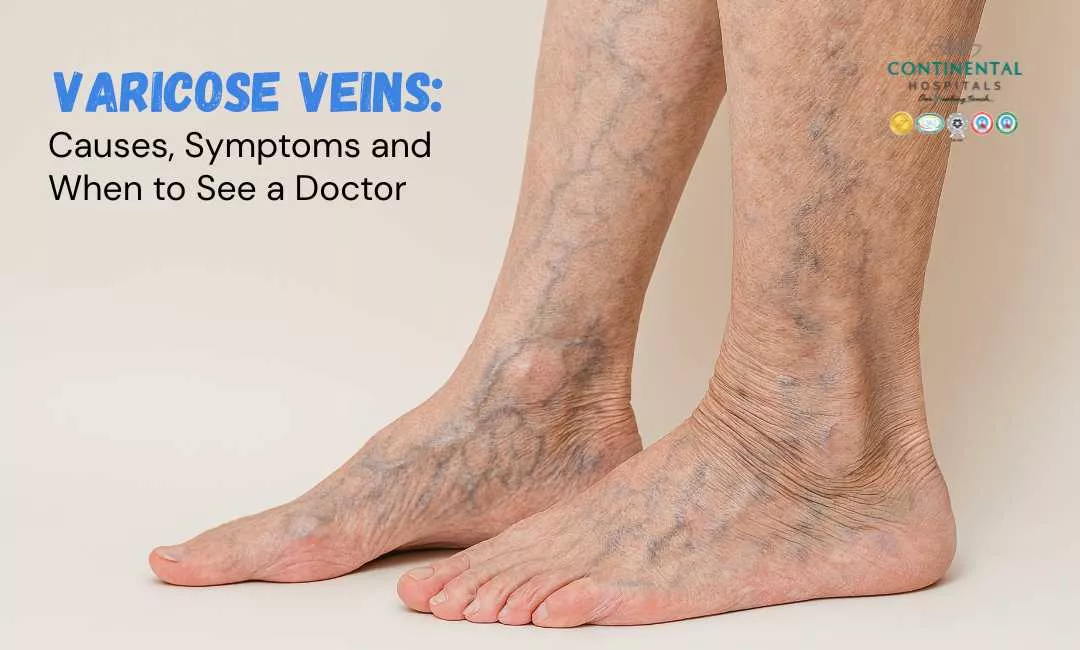Migraines, a complex neurological condition, affect millions of people worldwide, significantly impacting their quality of life. While many individuals experience occasional migraines, some endure a more persistent form known as chronic migraines. In this comprehensive guide, we delve into the distinctions between chronic and episodic migraines, shedding light on the symptoms, triggers, and management strategies for each. Understanding these differences is crucial for accurate diagnosis, effective treatment, and improved overall well-being.
What is Chronic Migraines &. Episodic Migraines?
To comprehend the disparities between chronic and episodic migraines, it's essential to first understand what migraines are. Migraines are intense headaches often accompanied by symptoms such as nausea, sensitivity to light and sound, and visual disturbances. Episodic migraines occur periodically, with sufferers experiencing attacks less than 15 days per month. On the other hand, chronic migraines are characterized by headaches occurring on 15 or more days per month, with at least eight of them fulfilling the migraine criteria.
Symptoms of Episodic Migraines
Frequency: Episodic migraines occur less frequently than chronic migraines. Typically, individuals with episodic migraines experience fewer than 15 headache days per month.
Duration: Migraine attacks in episodic migraines can last anywhere from a few hours to up to 72 hours if left untreated.
🥗 Healthy Plate Challenge
🍽 Add Your Favorite Dish
Pick Your 6 favorite foods, eat, and see the results.Drag & drop foods onto your plate.
Drop Food Here
Aura: Some individuals with episodic migraines may experience an "aura" before the onset of the headache. An aura is a set of neurological symptoms that can include visual disturbances, sensory changes, or difficulty speaking.
Triggers: Certain factors or triggers may provoke episodic migraines, such as stress, hormonal changes, lack of sleep, certain foods, or environmental factors.
Pain: The headache pain is often one-sided, throbbing, and can be moderate to severe. It may be aggravated by physical activity.
Nausea and Vomiting: Nausea and vomiting are common symptoms associated with episodic migraines.
Sensitivity to Light and Sound: Many individuals with episodic migraines experience sensitivity to light (photophobia) and sound (phonophobia) during an attack.

Symptoms of Chronic Migraines:
Frequency: Chronic migraines are characterized by headaches occurring on 15 or more days per month for at least three months, with at least eight of those headaches being migraines.
Duration: The duration of migraine attacks in chronic migraines is similar to episodic migraines, lasting from a few hours to up to 72 hours if untreated.
Aura: While auras can still occur in chronic migraines, they may be less common compared to episodic migraines.
Daily Headache: Individuals with chronic migraines often experience a daily or near-daily headache, which may be less severe than a full-blown migraine but still impacts daily functioning.
Medication Overuse Headache: Overuse of pain medications to manage headaches can contribute to the development of chronic migraines.
Impact on Daily Life: Chronic migraines can significantly impact a person's quality of life due to the frequency and persistence of headaches.
If you're struggling with any of these above symptoms, Book an appointment with a Neurologist.
Triggers for Episodic and Chronic Migraines
Identifying triggers is pivotal in managing migraines. Episodic migraines often have specific triggers, such as hormonal changes, certain foods, stress, or environmental factors. Chronic migraines, however, may have a more complex set of triggers, including medication overuse, sleep disturbances, and comorbidities like depression or anxiety. Recognizing and addressing these triggers is vital for effective migraine management.
Diagnosis and Treatment Approaches
Accurate diagnosis is crucial for tailoring effective treatment plans. Neurologists often employ a combination of medical history reviews, symptom analysis, and diagnostic tests to differentiate between chronic and episodic migraines. Treatment approaches vary based on the migraine type, ranging from lifestyle modifications and preventive medications for episodic migraines to a more comprehensive strategy involving multidisciplinary interventions for chronic migraines.
Lifestyle Modifications for Chronic and Episodic Migraines
Both chronic and episodic migraines can be significantly impacted by lifestyle changes. While medications play a crucial role in treatment, incorporating certain changes into your daily routine can help reduce the frequency and severity of attacks, improving your overall quality of life.
Here are some key areas to focus on:
Sleep:
Maintain a consistent sleep schedule: Go to bed and wake up at the same time each day, even on weekends, to regulate your sleep-wake cycle.
Aim for 7-8 hours of sleep per night: Adequate sleep is essential for regulating brain chemicals and preventing triggers.
Create a relaxing bedtime routine: Establish a calming wind-down routine before sleep, including taking a warm bath, reading a book, or practicing relaxation techniques.
Avoid caffeine and alcohol before bed: These substances can disrupt sleep patterns and trigger migraines.
Diet:
Stay hydrated: Drink plenty of water throughout the day to avoid dehydration, a known migraine trigger.
Eat a balanced diet: Focus on whole foods like fruits, vegetables, and lean protein, while limiting processed foods, sugary drinks, and excessive salt.
Identify and avoid food triggers: Certain foods, like aged cheese, red wine, and processed meats, can trigger migraines in some individuals. Keep a food diary to identify potential triggers and avoid them.
Maintain regular mealtimes: Skipping meals or eating irregularly can destabilize blood sugar levels and trigger migraines. Eat regular meals and snacks throughout the day.
Exercise:
Engage in regular physical activity: Regular exercise, even mild forms like walking or yoga, can reduce stress and improve sleep, both of which can help prevent migraines.
Start slowly and gradually increase intensity: If you're new to exercise, start with short, low-impact sessions and gradually increase intensity and duration as tolerated.
Listen to your body: Don't overexert yourself. If you feel a migraine coming on, take a break from exercise and rest.
Stress Management:
Practice relaxation techniques: Techniques like deep breathing, meditation, yoga, and progressive muscle relaxation can help manage stress and reduce migraine frequency.
Build healthy coping mechanisms: Find healthy ways to manage stress, such as spending time in nature, listening to music, or spending time with loved ones.
Seek professional help: If you're struggling to manage stress on your own, Book an appointment with a Neurologist.
In conclusion, understanding the nuances between chronic and episodic migraines is instrumental in navigating the complexities of this neurological condition. Accurate diagnosis, awareness of triggers, and a tailored treatment plan can empower individuals to regain control over their lives. Whether facing occasional episodic migraines or the persistent challenges of chronic migraines, a holistic approach to management ensures a better quality of life for those grappling with this debilitating condition.
Related Blog Articles-
1. Exercise and Cognitive Function: How It Sharpens Your Mind
2. Dementia Myths vs. Facts
3. Early Signs of Alzheimer's: How to Recognize Them
.webp)














